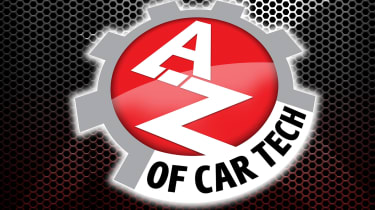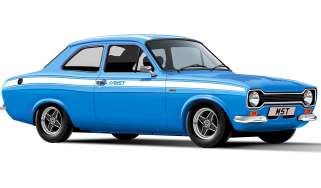Car Tech A to Z: A is for adaptive cruise control, ABS, airbags and more...
The letter A in our A to Z of Car Tech explains adaptive cruise control, ABS brakes, Adaptive Terrain response and auto dimming mirrors
The technology contained within the modern motor car can be both fascinating but slightly baffling nowadays. Most of such technology exists to make our cars safer, more efficient and just better than ever to drive.
But some of it can be quite confusing for the average motorist, so in this A to Z series we will attempt to unravel the mystery of technology that is the modern motor car, starting here with the letter A…
A is for adaptive cruise control, which will become increasingly relevant as our cars become more autonomous in years to come. Adaptive cruise control works by using radar technology to enable a vehicle to maintain its distance relative to the vehicle it is following. Eventually this technology will allow so-called road trains to drive on our motorways, in which a driver can effectively “switch off” until they need to leave the motorway. But that’s a little while away yet.
• Cruise control and adaptive cruise control: the complete guide
A is for aluminium, which is key to reducing weight but maintaining strength in vehicles. By using aluminium instead of steel for a car’s key structures – you not only reduce its kerb weight but also increase its fuel efficiency, improve its dynamic potential, strengthen its core and reduce its emissions. Aluminium is expensive to use relative to steel, yes, but its advantages far outweigh this one disadvantage.
A is also for anti-lock brakes, which enable a driver to stop a car with maximum efficiency while being able to steer round an obstacle at the same time. Anti-lock brakes work via sensors not only at the wheels but throughout the car. When the system detects a potential lock up, it reduces braking power at the relative wheel. And by keeping that wheel rotating, this enables the driver to maintain steering control while braking.
• Anti-lock braking systems explained
A is for Adaptive Terrain response, which works in a similar way to anti-lock brakes but also using the transmission and traction control systems to help maintain grip on uneven surfaces – such as when off road. Electronics obviously play a key role in this technology, allowing the anti-lock, the traction control, the transmission AND the suspension systems to work “as one” to help generate maximum grip on slippery surfaces.
A is for assisted lane keeping, which uses the same radar technology as the adaptive cruise control but this time to keep a vehicle travelling within its required lane. Sensors to the front and sides of the vehicle identify numerous features around the car to keep it travelling in a straight line, sending pulses through the steering wheel if it veers off course; when a driver begins to fall asleep at the wheel, for instance.
A is for airbag. Airbags deploy when motion sensors detect that a sufficiently dramatic decrease in vehicle speed has taken place, and are then inflated in milliseconds before the passenger impacts with the cabin. Airbags then deflate almost as rapidly as they’ve just inflated to help further soften the blow during impact. Airbags have saved millions of lives since their introduction in the 1970s.
A is for auto dimming mirrors. These work via light sensors contained within the mirror itself. When the sensor detects an excess of light, a shade is applied across the surface of the mirror and, as if by magic, the excess brightness to the driver’s eye is removed.
Next, the letter B...

Find a car with the experts


